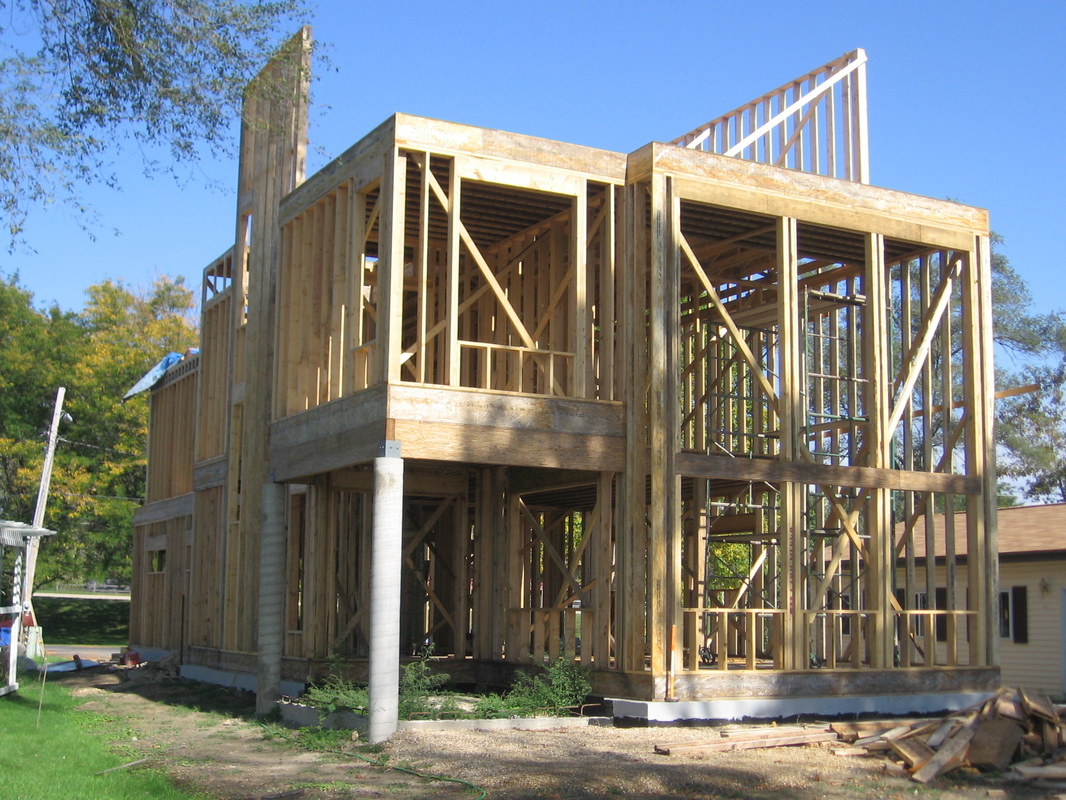My previous posts in this series - Working with an Architect - have made little mention of the third main member of the project team (the other two being the homeowner and the architect) - the builder. There are two common ways of selecting a builder: bidding and negotiation.
Bidding a Construction Project
Some clients choose to “bid out” a project, after the design process is finished. By asking multiple builders to submit bids for building their new home, addition or remodel, they hope to get their project built for the best price. This approach may result in a lower final cost, assuming that the construction cost doesn’t creep up through the use of change orders.
When putting a project out to bid, the more information that is called out in the design drawings, the more likely you are to get an apples-to-apples comparison between bidders. Where information is lacking, bidders may make assumptions about your expectations that are not in line with your actual wishes.
Expect the bidding phase to take three weeks or longer for most projects. It can easily take that long for a bidder to collect cost information from the many subcontractors and material suppliers who will work on the project, and then assemble that information into a total bid. If you do choose to bid a project, I suggest asking for bids from no more than three builders, both as a courtesy (it takes a lot of time and effort to put a bid together) and because three bids is enough to give you a representative sample. How you choose to interpret those bids is another question. If all three bids are fairly close, you can probably feel confident that they are all reasonable. If one bid is substantially lower than the others, this could be an indication that something has been overlooked by that bidder, so think through your decision carefully.
Negotiating a Construction Contract
Some clients come to me having already selected their builder, or with the intention of choosing one without going through the bidding process. There are some definite advantages to bringing the builder on board early in the design process, preferably by the end of the schematic design phase.
One advantage is that the builder can contribute his or her experience by suggesting ways to achieve the same results more economically and by recommending materials and products that he or she has found over the years to be reliable and of good quality. The design can also be tailored to his or her preferred way of building, when it’s possible to do so and still achieve the design intent.
Secondly, the builder can advise on the cost of a building throughout the project, helping to keep it within budget.
Finally, it may be possible to do fewer design drawings. When there is no bidding process, and I feel that the builder “gets” the design, I may feel confident about leaving some of the details to be worked out in the field during construction.
Choosing the Builder
Regardless of whether you choose to bid or negotiate a project, it is important that you choose a builder whom you trust to do a good job and whom you will feel comfortable working with on this very important project. This blog post will not go any further into the process of selecting a builder. However, I will say that different types of builders are best for different types of home projects, so it’s important to match your builder with your expectations of the finished product. It’s also important to talk to others who have worked with your prospective builder to learn about their experiences with him or her. And always have a written contract that clearly spells out what your builder is providing, at what cost and under what conditions.
Moving on to Construction
Now the architect’s drawings are finished, you’ve chosen your builder, and the project is ready to move into the construction phase.
Next - Part 7: Construction Phase Services


 RSS Feed
RSS Feed
